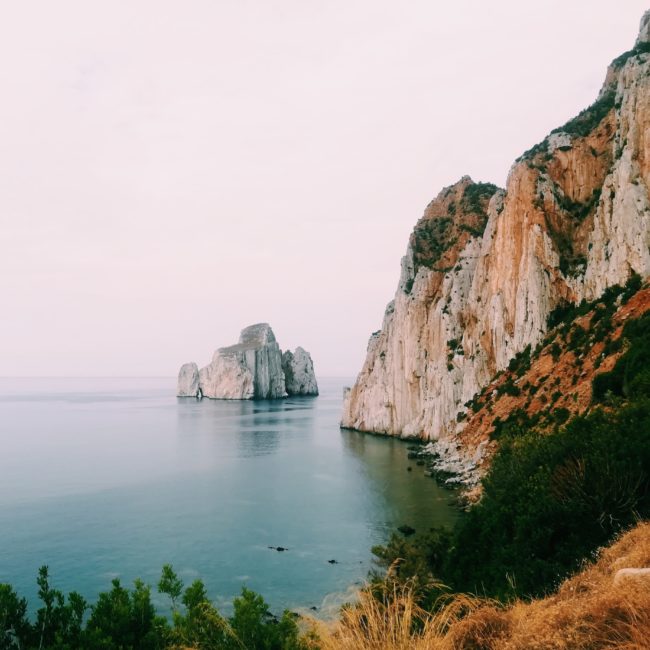
Italy is located in southern Europe on the Apennine Peninsula. Its distinct shape, resembling a kicking boot, makes it easy to recognize it on maps or even from space.
The Adriatic Sea borders the peninsula in the east, the Sea of Sicily in the south, the Ionian Sea in the southeast, the Ligurian Sea and the Tyrrhenian Sea in the west; all those seas are parts of the Mediterranean Sea.
Italy has international borders with Austria, France, the Holy See (Vatican City), San Marino, Slovenia, and Switzerland. It also shares maritime borders with Albania, Algeria, Croatia, Greece, Libya, Malta, Montenegro, Spain, and Tunisia.
Two of the largest Mediterranean islands belong to Italy, Sardinia in the west and Sicily in the south.
The country covers an area of 301,318 km² (116,340 sq. mi.), compared, it is about 80% the size of Japan or slightly larger than the U.S. state of Arizona.
Italy has a population of more than 59.6 million people (in 2020), the capital and largest city is Rome (Italian: Roma). Other major cities are Florence, Milan, Naples, and Venice. Spoken language is (only) Italian.
The country is known for its more than 3,000 years of history, in 753 BC. Rome was founded. Italy was a center of ancient Greco-Roman culture, and in the 15th-century, they invented the Renaissance. Caesar, Galileo and Columbus were Italians. Italy was a center of ancient Greco-Roman culture and in the 15th-century they invented the Renaissance.
We help you fulfill your bucket list!
If you don’t see what you’re looking for, we would love to help create custom solutions and reach out to you!
Country Information
- Italy still has confirmed COVID-19 cases within its borders.
- The Department of State has issued a Level 4 Travel Advisory for Italy recommending that travelers avoid all nonessential travel to Italy. The Centers for Disease Control (CDC) has also issued a Level 4 Travel Health Notice for Italy due to COVID-19 concerns with the same recommendations regarding non-essential travel.
- Essential services such as food stores, pharmacies, newsstands, and tobacco shops remain open throughout Italy.
Passports presented to Immigration officials must have at least six months validity remaining beyond your planned date of departure from the Schengen area. They should also have at least 2 blank pages for the entry stamp. US citizens are not required to have a visa if they’re staying for less than 90 days. In addition, you should also have at least 10,000 Euros for entry and exit from Italy.
All travelers to Italy should update all their routine vaccinations. Additionally, all visitors above the age of 16 should be vaccinated for COVID-19 in order to gain entry into the country.
Italy has a predominantly Mediterranean climate with mild, sometimes rainy winters and sunny, hot, and usually dry summers. However, with such a large area and so many different geographical features—from high mountains to over 4,000 miles of coastline, you’ll find plenty of regional differences and even micro-climates.
Much of Italy, perhaps as much as 95% of the country, has access to cellular networks. The country also has extensive coverage when it comes to the Internet. However, there may be areas with no cell or Internet connections, especially in remote locations.
Italian power companies supply 230V of electricity cycling at 50Hz. There are three associated plug types; types C, F and L. Plug type C is the plug with two round pins, plug type F is the plug which has two round pins plus two earthing clips on the side, and plug type L is the plug type which has three round pins.
The Centers for Disease Control and Prevention (CDC) has issued a Level 4 Travel Health Notice for Italy due to COVID-19. This indicates a very high level of COVID-19. Visit the Embassy’s COVID-19 page for more information on COVID-19 in Italy and to learn about the restrictions in place affecting U.S. citizen entry into Italy.
If you decide to travel to Italy:
- Visit the CDC’s webpage on Travel and COVID-19.
- Be aware of your surroundings when traveling to tourist locations and crowded public places.
- Follow the instructions from local authorities.
- Monitor local media for breaking events and adjust your plans based on the new information.
- Enroll in the Smart Traveler Enrollment Program (STEP) to receive alerts and make it easier to locate you in the event of an emergency.
- Prepare a contingency plan for emergency situations. Review the Traveler’s Checklist.
The lira was the official unit of currency in Italy until 1 January 1999, when it was fully replaced by the euro. Travelers are advised to carry cash, an ATM, traveler’s check card, or a credit card that can be used for cash advances in case of emergency. Most hotels, lodges, and camps will accept credit cards. However, it is advised to withdraw cash when visiting remote areas and villages.
The Italians account for 95% (above 60 millions) of the total population of Italy, making it the biggest ethnic group in the country. The remaining 5% of the population consists of ethnicities like Albanians, Romanians, Ukrainians and other Europeans (2.5%); Africans (1.5%) and several other minorities (1%).
Italian is the official language of Italy, with around 93% of the population being native Italian speakers. Around 50% of the population speak a regional dialect as their mother tongue. Many dialects are mutually unintelligible and thus considered by linguists as separate languages, but are not officially recognised.
85.6% of Italy’s population identifies as Christian (78.9% Catholic, 4.6% orthodox Christians, 0.6% Protestants, 1.5% other Christians), while 2.6% belong to other religions and 11.7% are non-religious (7.5% atheists, 4.2% agnostics).
The Italian constitution is preceded by the statement of certain basic principles, including the definition of Italy as a democratic republic, in which sovereignty belongs to the people.
The Italian economy has progressed from being one of the weakest economies in Europe following World War II to being one of the most powerful. Its strengths are its metallurgical and engineering industries, and its weaknesses are a lack of raw materials and energy sources. More than four-fifths of Italy’s energy requirements are imported. Nevertheless, the chemical sector is also flourishing, and textiles constitute one of Italy’s largest industries.Services, particularly tourism, are also very important. At the end of the 20th century, Italy, seeking balance with other EU nations, brought its high inflation under control and adopted more conservative fiscal policies, including sweeping privatization.


